As the singer kicks off the 52-date sold-out tour, AD explores how Swift is paying homage to her past with her stage design
There’s a joke circling the internet following the opening weekend of Taylor Swift’s The Eras Tour: look at any random collection of photos taken throughout the night—some even snapped mere minutes apart—and you’d never know they all came from the same show. What starts in a hazy pink, cotton candy dreamscape ends in a sultry, sparkling twilight—with plenty of undulating stops in the middle, from ethereal fairytale woods to the energetic skyscrapers of the concrete jungle. “[The stage] changed for almost every song, which is crazy to think about considering most artists have the same stage for their entire set list,” Maya Minocha, a fan who was at the opening weekend in Glendale, Arizona, tells AD.
Following the COVID-19-induced cancellation of Swift’s sixth headline tour, Lover Fest, in 2020, The Eras Tour is her triumphant return to live music. Three new albums and two rerecorded records later, the three-hour 44-song show recaps every era of her 17-year career in her most ambitious performance to date. “The sets absolutely made this possible,” Ginnie Low, who also attended the shows and runs the TikTok account The Thrifty Swiftie, says. “I didn’t move from my tiny little seat area the whole concert, but was transported to 10 different worlds.” Ariel Miranda, another concert-goer agrees. “It was such an immersive experience,” she says. With a distinct focus on world building, AD takes a look at the incredible set design that helps bring her music to life throughout the 52-date sold-out tour.
From our partners:
The Lover Era
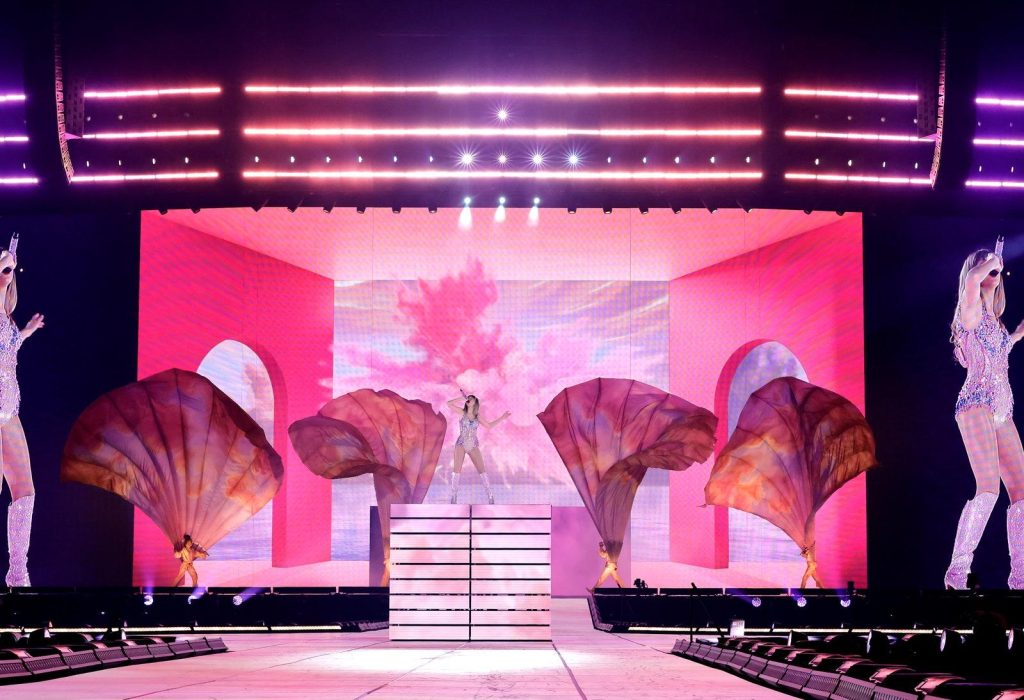
Swift opened the show with tracks off of her seventh studio album, Lover. “It was as if she picked up right from where she left off,” Miranda says. Having characterized the album with yellow, pink, and blue pastels, Swift—outfitted in a shimmering leotard—belted songs like “Miss Americana and the Heartbreak Prince” and “Cruel Summer” while dancers wielding billowing tapestries performed beneath a rosy glow.
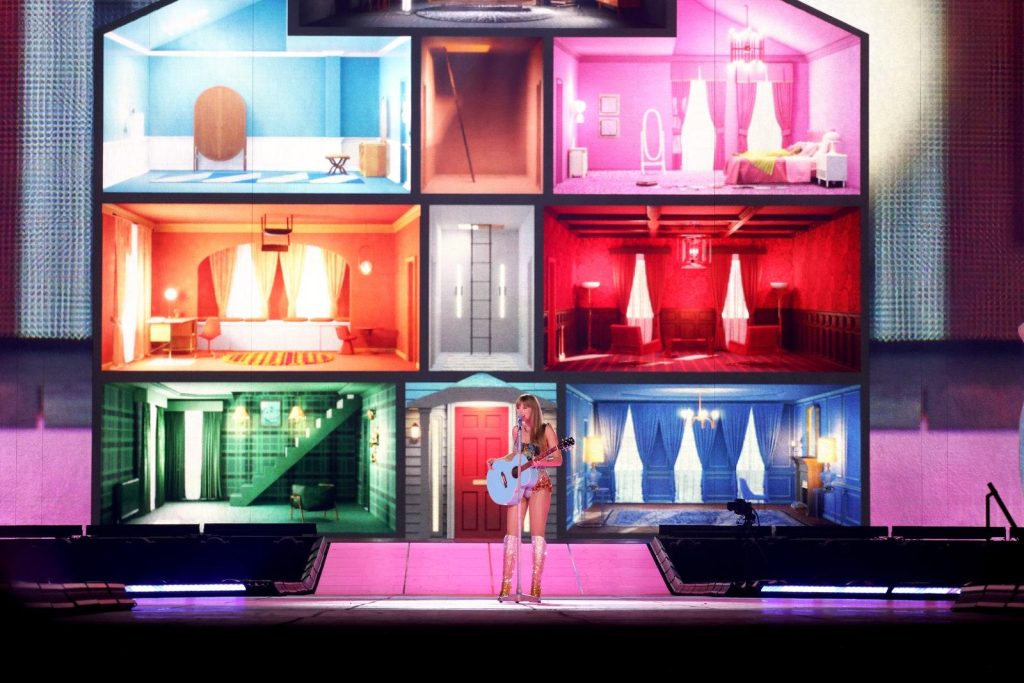
At one point in the Lover set, a familiar dollhouse-like home appeared behind Swift, which many fans recognize from the “Lover” music video. “The screen began flashing images that eventually would piece together to become the Lover House, which was a huge Easter egg,” Miranda adds. In the video, Swift and costar Christian Owens move through various colored rooms within a house in a snow globe. When the music video first dropped, fans theorized that each room represented one of her existing albums, and with the release of three new albums, many believe the home is now complete.
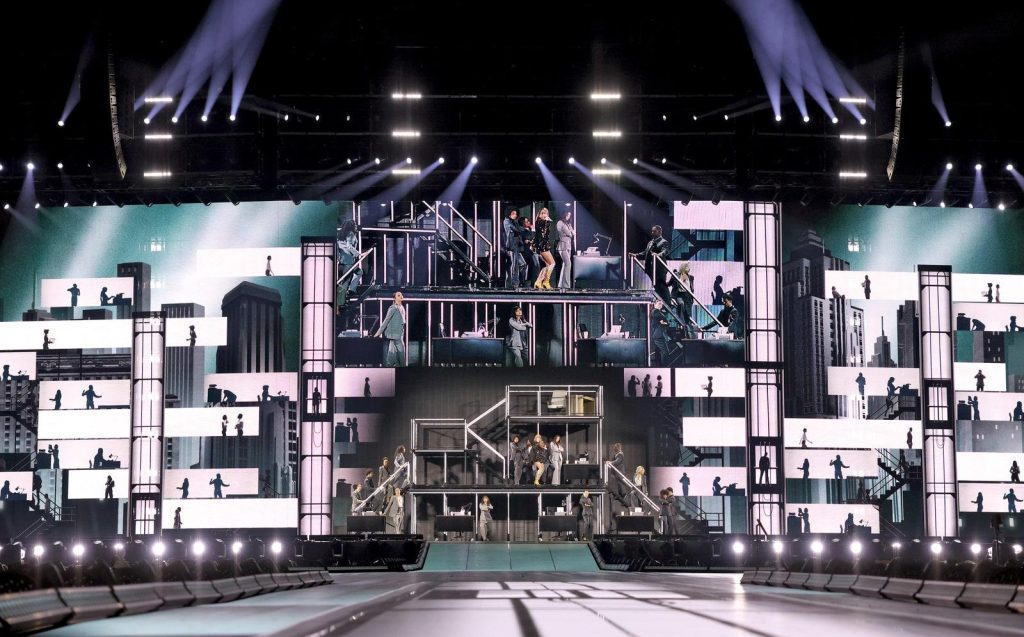
Other notable scenes from the Lover section of the show include a full-scale office cosplay moment during “The Man,” where Swift sings about the sexism she’s faced throughout her career.
The Fearless Era
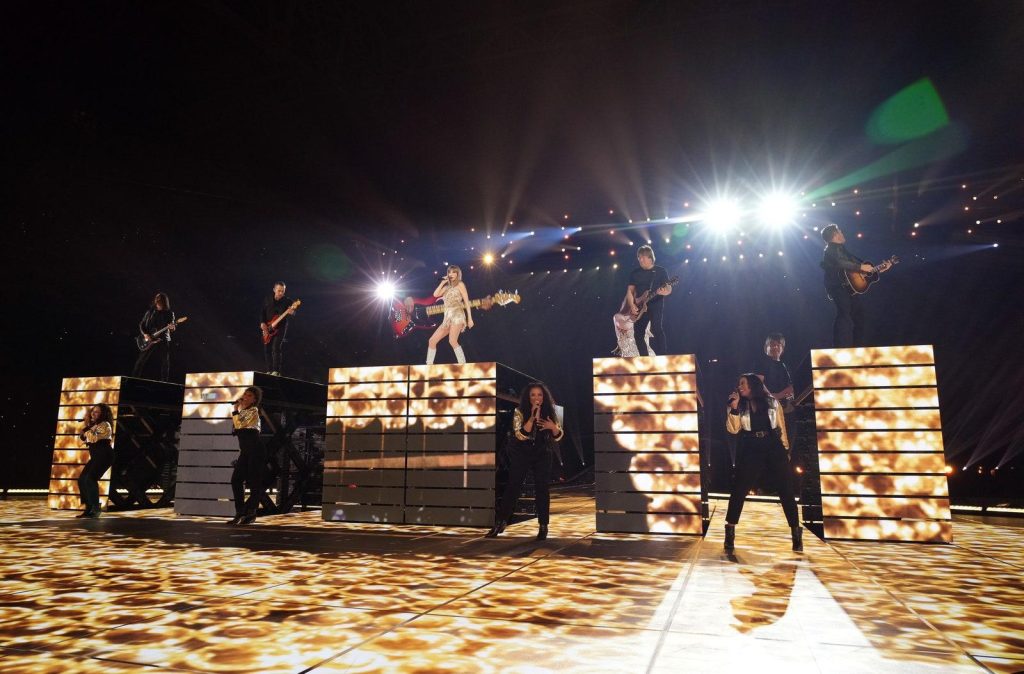
Next up in the night, Swift performed three songs from her second album, Fearless, for which she won album of the year in 2010 at the Grammys (the youngest artist to ever win the accolade). Though she was certainly popular in country circles following her self-titled debut album, it was this second record that established her mainstream success. And not only did the singer bring back some classic circa 2009 dance moves, she also brought back a dazzling gold motif that she employed when promoting the album over a decade ago.
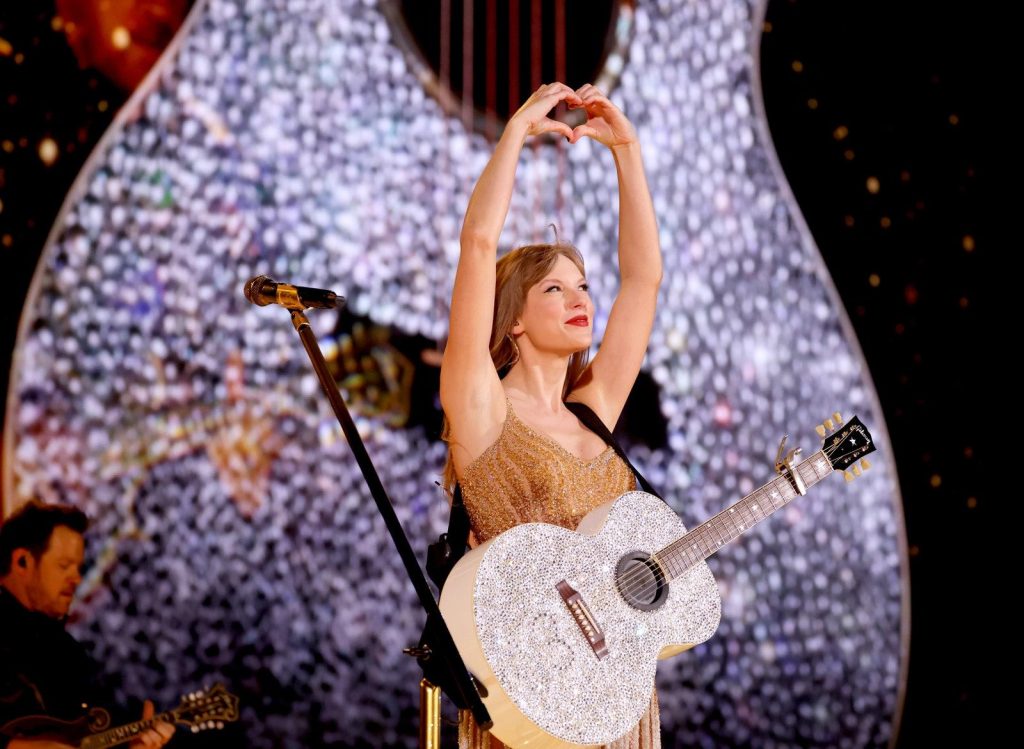
Outfitted in soft curls and sequins, Swift was often portrayed as the girl next door and an American sweetheart during this period. Though she did, at times, lean into this persona, fans remember her determination to be bold, strong, and, yes, fearless. The sparkles and shine acted as visual representation of this.
For fans, perhaps the most exciting Easter egg was a nod to the bedazzled guitar that she toured with during her Fearless era. In an Instagram story, Swift revealed that it was her parents who artfully stuck the shimmering crystals onto her acoustic guitar just days before The Eras Tour kicked off.
The Evermore Era
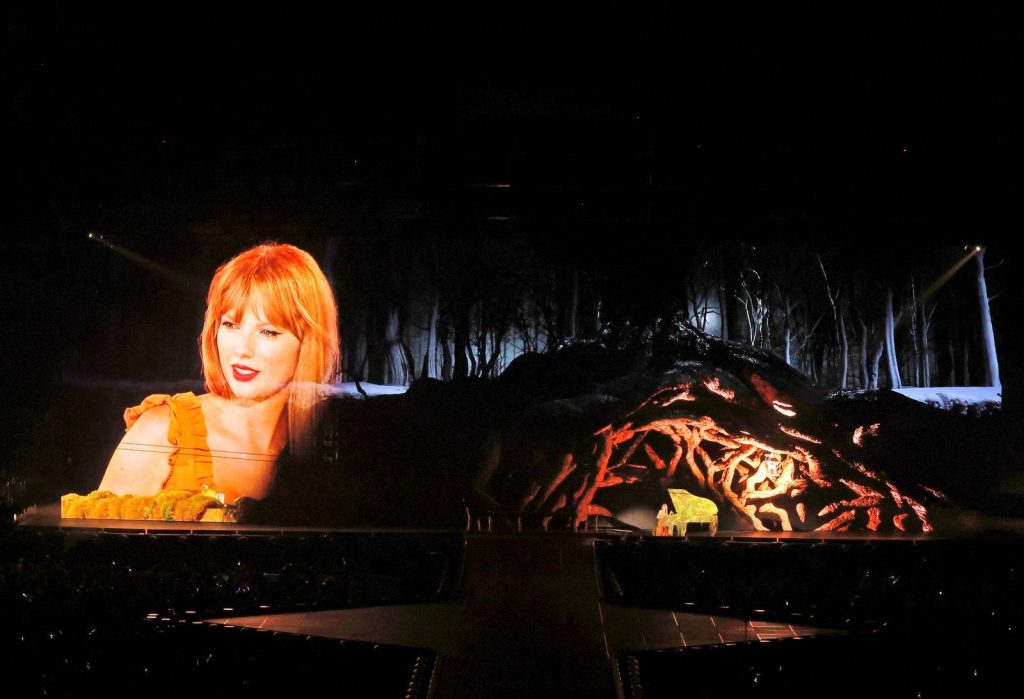
“The most striking moment was as she transitioned from Fearless to Evermore,” Low opines. “The woods grew out of the stage.” A sister album to her 2020 Folklore, Swift’s ninth album, Evermore, was positioned as a deeper exploration of the “folklorian woods,” a fictional, cottagecore-inspired place used to direct her first foray into indie folk music. Throughout this portion of the night, massive oak-like trees took center stage while Swift crooned behind a moss-covered piano.
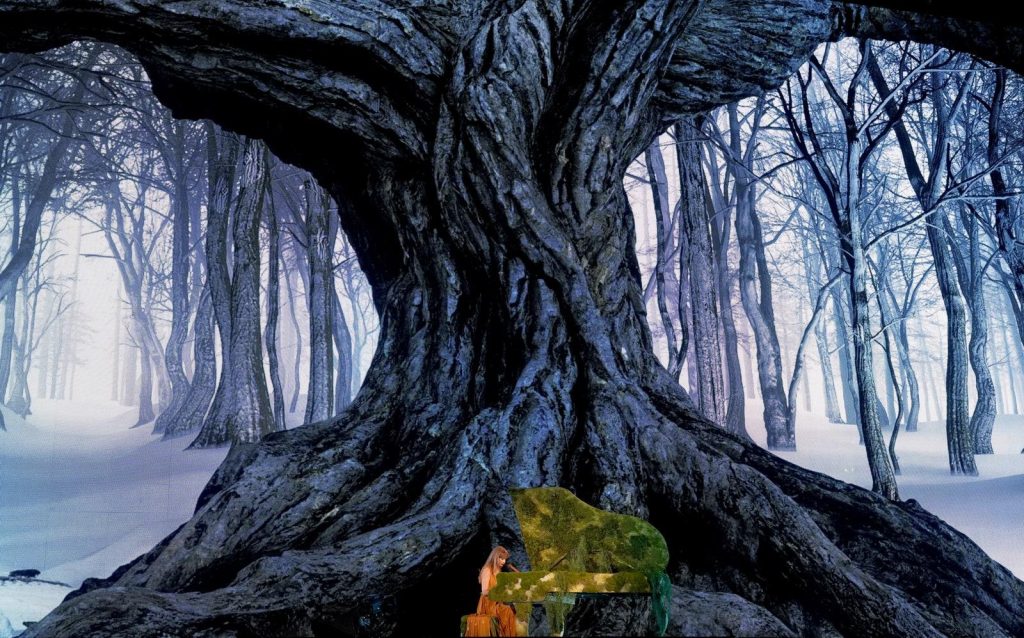
“I loved the Evermore era setup, particularly during her performance of ‘Willow,’” Miranda says. “It really made you feel like someone literally just picked you up and dropped you straight into this particular Taylor Swift album.” Sonically, Evermore was understood as a more gothic album compared to Folkore. The bare trees and snow covered woods represent that, and they also show Swift’s desire to strip back layers and portray innately raw, natural storytelling.
The Reputation Era
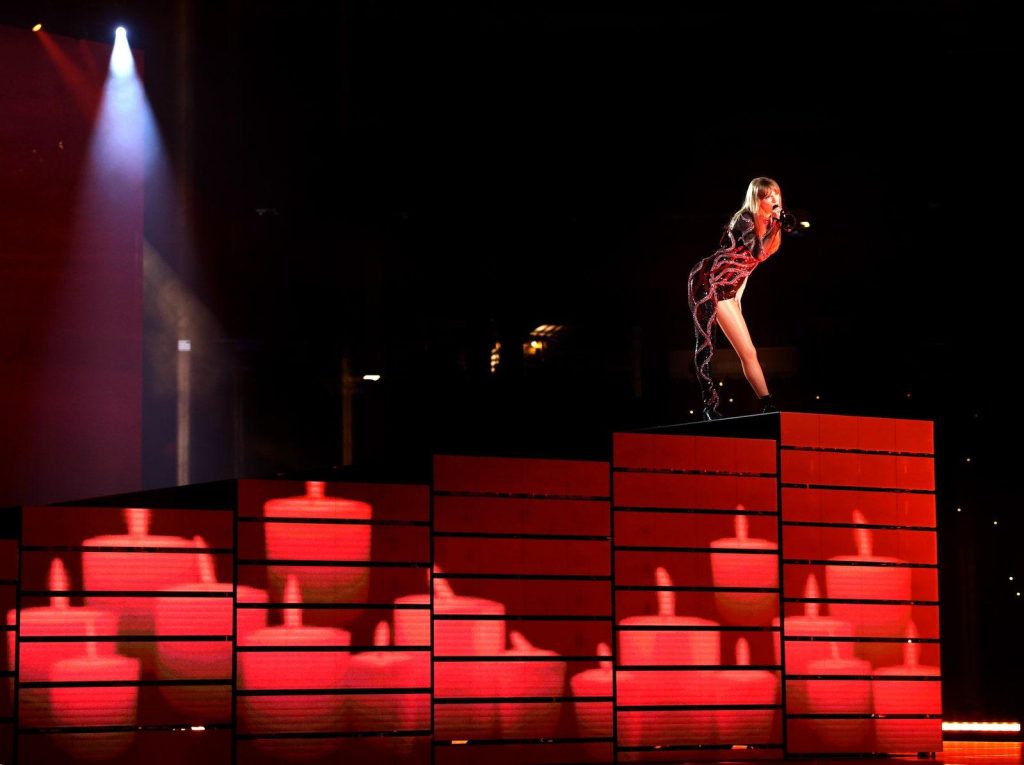
Spawned from Swift’s 2016 public feud with Kim Kardashian and Kanye West, Reputation represented the singer’s reflection on fame and public perception and an opportunity to rewrite the “good girl” narrative she’d carried around for years. Though the album is often billed as defensive and reactive, it remains one of her most misunderstood collections: It’s also full of love songs and sweet moments. The dark stadium and blood red risers certainly support the most common perception of the album; however, it’s hard to miss the lit candles just below her. After all, it’s no coincidence burning is just as frequently used to describe rage and anger as it is passion and love.
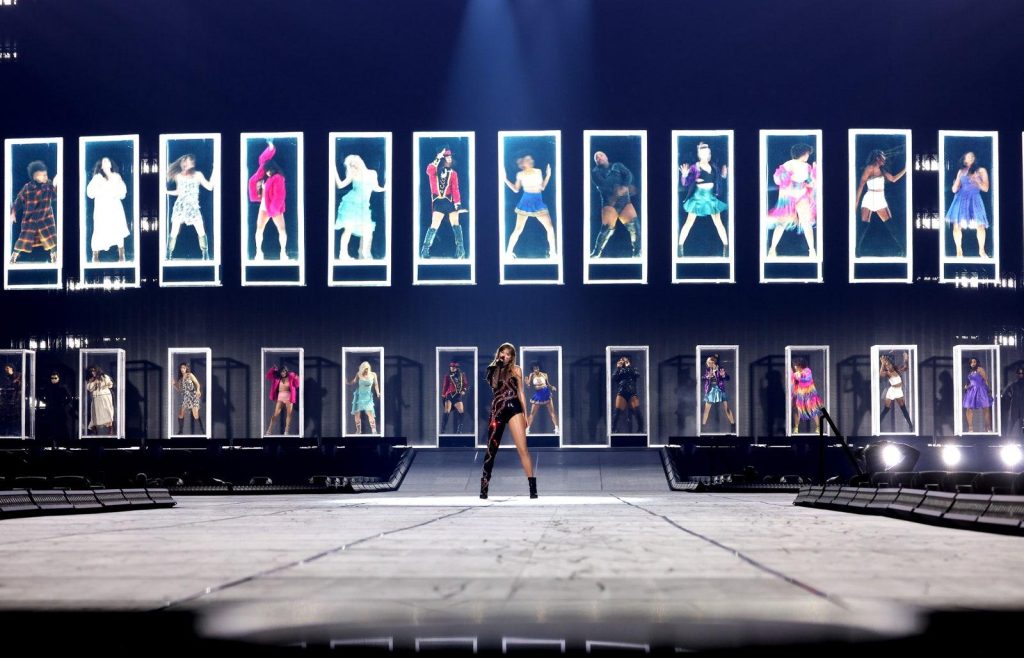
During “Look What You Made Me Do,” Swift’s backup dancers perform in doll boxes dressed in outfits inspired by previous looks she’s worn. The moment was a direct nod to the song’s music video, in which Swift reenacts various moments throughout her time in the public eye in an eruptive, Easter egg-filled video.
The Speak Now Era
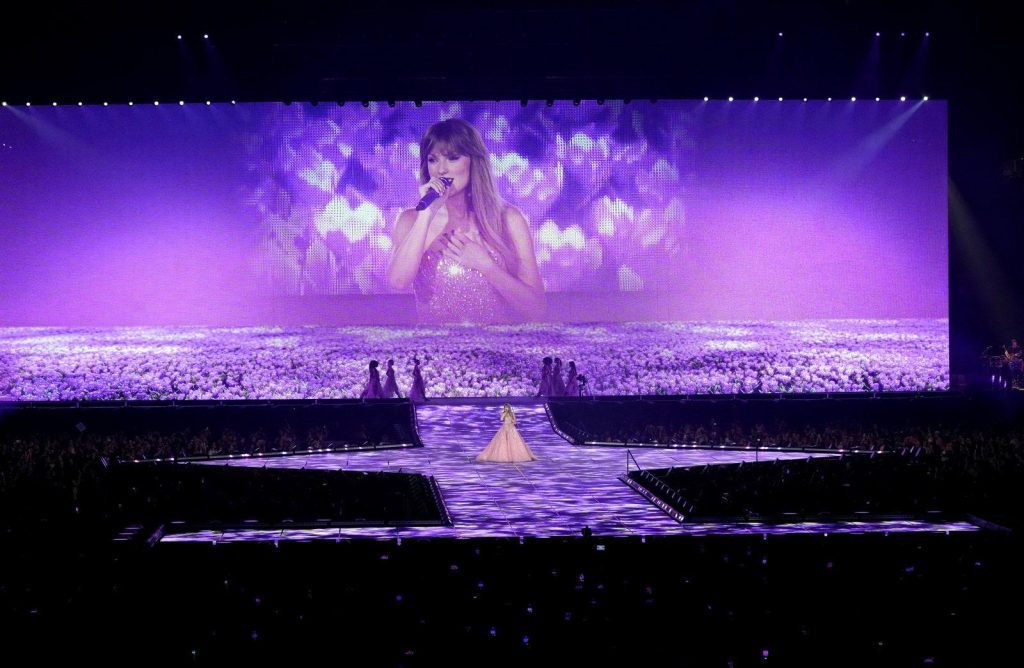
Though Swift only performed one song from her third album, Speak Now—much to the disappointment of some fans—she made sure to make it count. The color purple defined the album’s aesthetic, and, though the shade is often associated with royalty, it can also symbolize ambition, power, and independence. Following her historic win at the Grammys for Fearless, Speak Now was a pivotal moment in her career. Could she keep up the pace or was she another teen star who lost momentum as they reached young adulthood? Not only did Swift deliver, she proved she could do it on her own: Speak Now was the first album she wrote entirely solo.
The Red Era
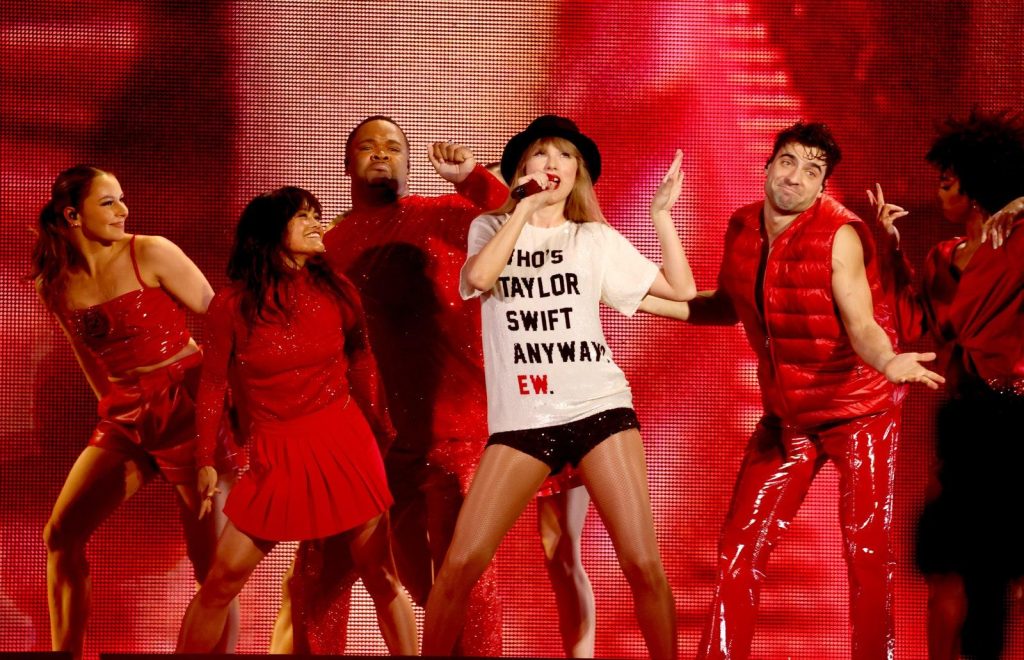
The original Red tour, which took place between 2013 and 2014, was her biggest at the time. It included a seven-piece band, fifteen dancers, multiple costume changes, as well as jumbotrons and multilevel stages. Though The Eras set certainly honored some of these larger-than-life moments from the first Red tour, it also showed considerable restraint.
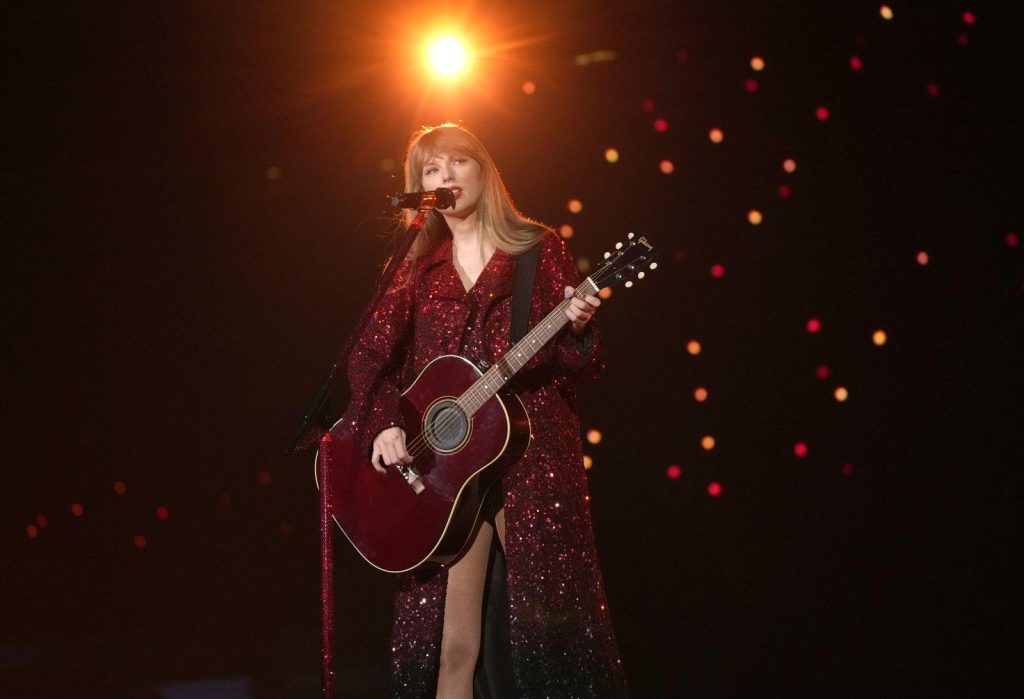
During one particularly emotional moment, Swift sang the 10-minute version of her critically acclaimed “All Too Well” with just her acoustic guitar. However, this doesn’t mean it wasn’t exciting. “Even some of her slower songs like “All Too Well,” where it was just her and a guitar, had insane stage effects that you wouldn’t expect, like snow confetti falling across the stadium and the stage rising when she started singing a high note,” Minocha explains.
The Folklore Era
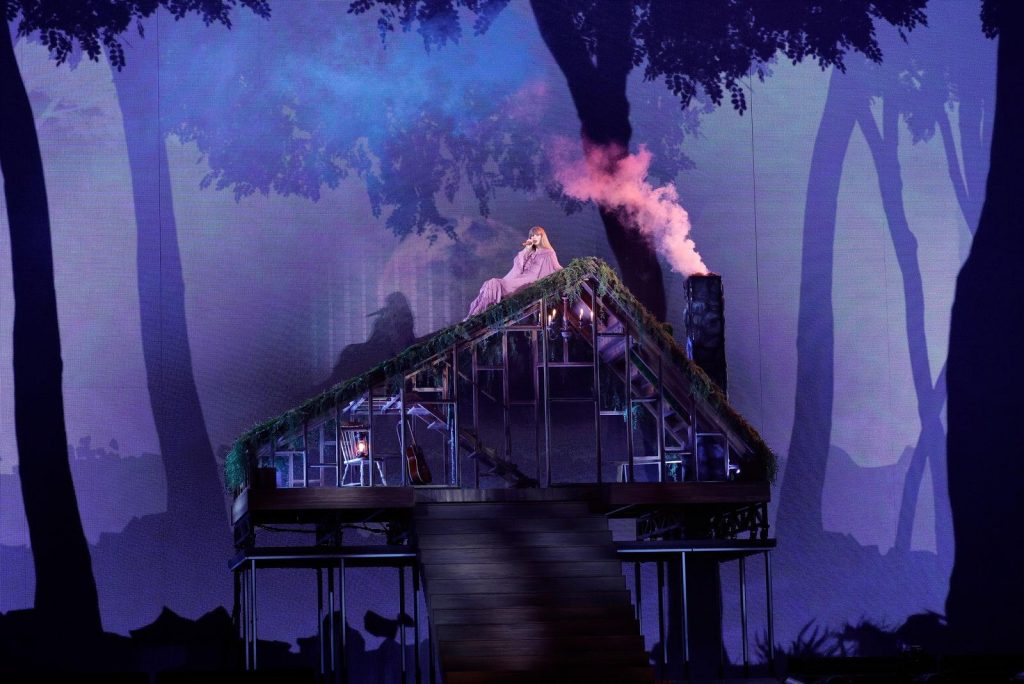
“I was so obsessed with the Folklore set because it seemed like Taylor was living her best life in a little remote forest cabin even though some 60,000 people were watching her,” Minocha says of the A-frame cabin Swift brought on stage. (A version of this home was first seen in her 2021 Grammy’s performance.)
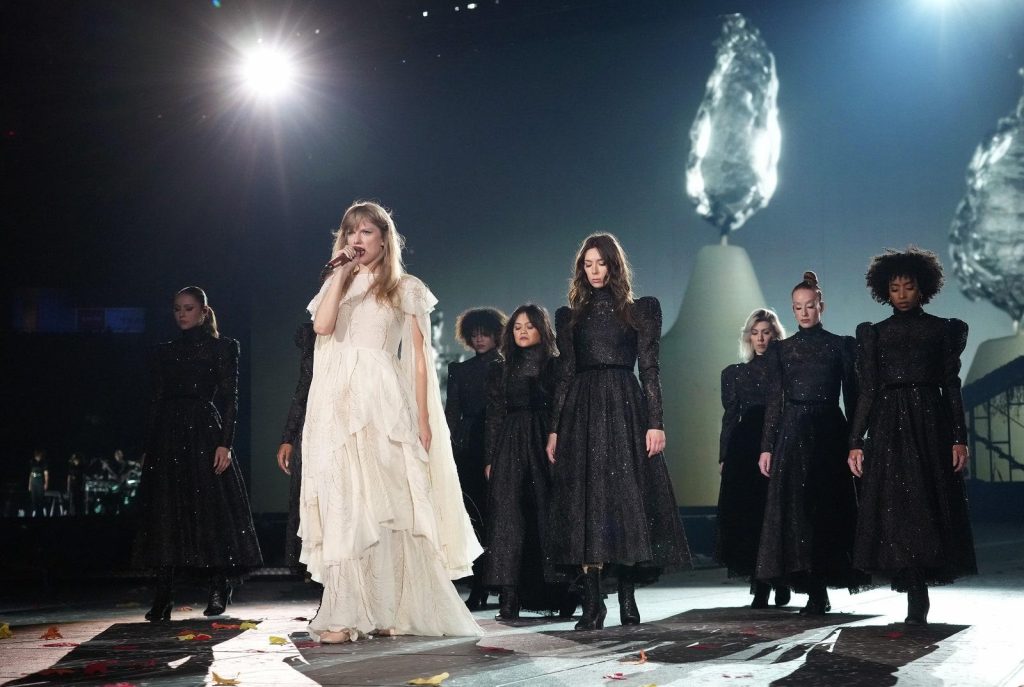
Thematically, Folklore explored a fictional woodland world Swift dreamed up during quarantine, and while a cabin certainly captures that aura, the choice of an A-frame specifically is notable. Because they were relatively cheap and easy to build, the style of home grew in popularity in the United States following World War II as vacation properties—an appropriate connection given the album is centered around an escapist fantasy.
A-frames also represented a unique moment for architects who, with little financial consequences at stake, were able to test out their more speculative creative ideations. In many ways, with lockdowns, limited promotion, and no obvious answer for how or if the music would be performed live, this is what Swift’s Folklore era represented too: the opportunity to explore, uninhibited. “I love that album and she really created this whole world for it,” Low adds, “Building the folklore cabin and bringing us all into that world with her was just so cool.”
The 1989 Era
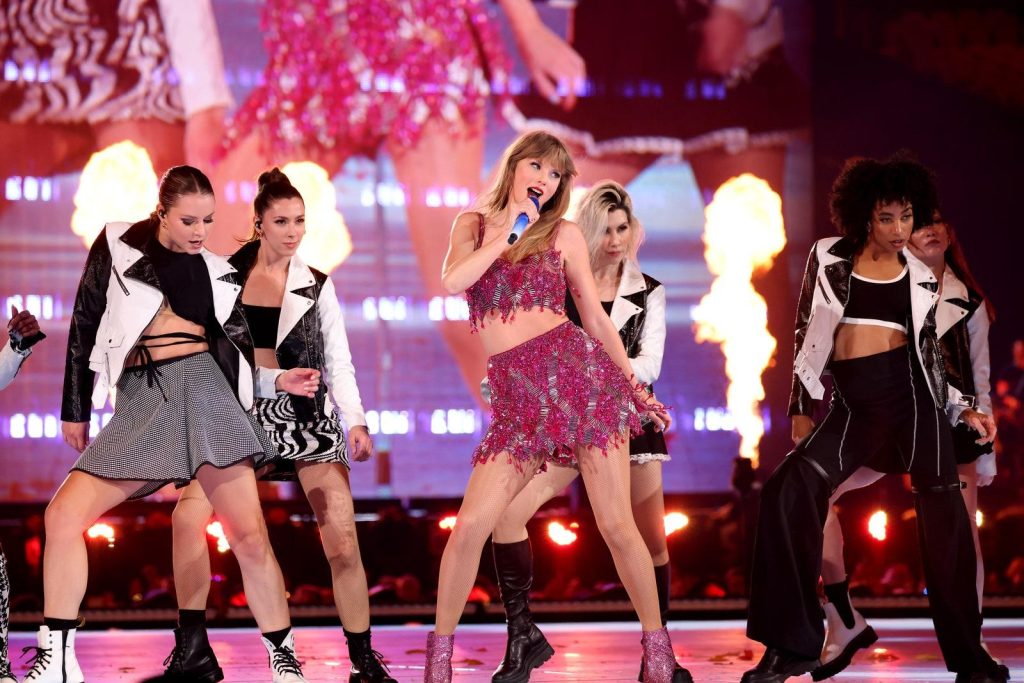
“Another thing that I loved about the stage design in general was how there were basically three different parts of it that all connected together: the main stage, the diamond stage, and the catwalk that led to the end of the stage,” Miranda says. “She really utilized each and every one of these sections of the stage at different times during the night.”
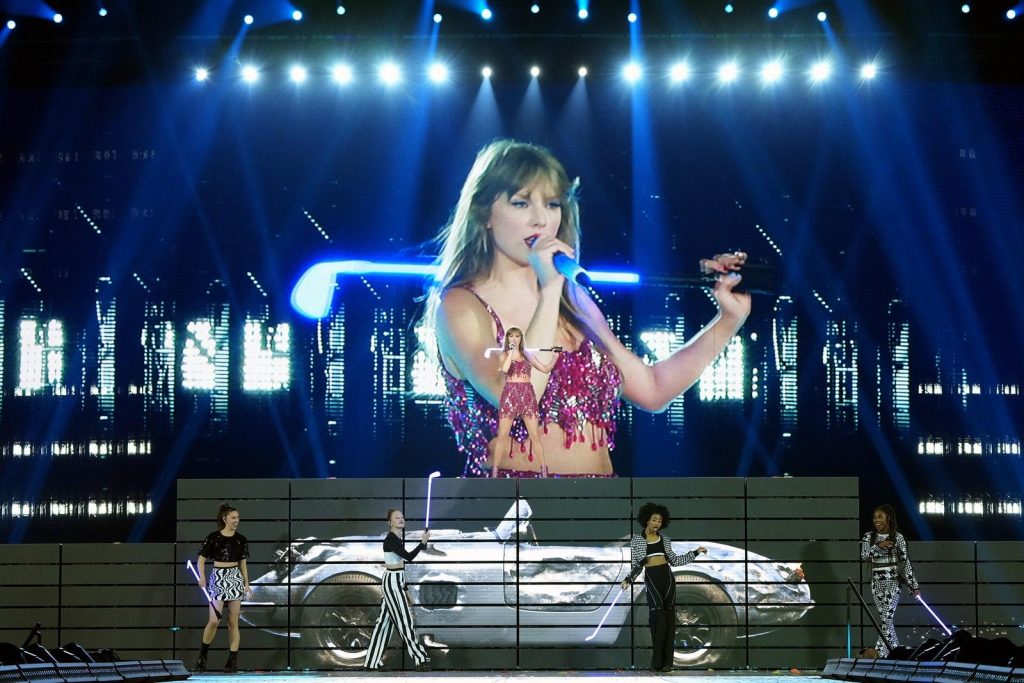
Though examples are abundant, a particularly creative use came during Swift’s 1989 set, a record which won Album of the Year at the Grammys in 2016. While performing “Blank Space” on the central diamond, the raised portion displayed a Shelby Cobra, which Swift and backup dancers “hit” with light-up golf clubs in a live reenactment of an iconic scene from the song’s music video.
The Midnights Era
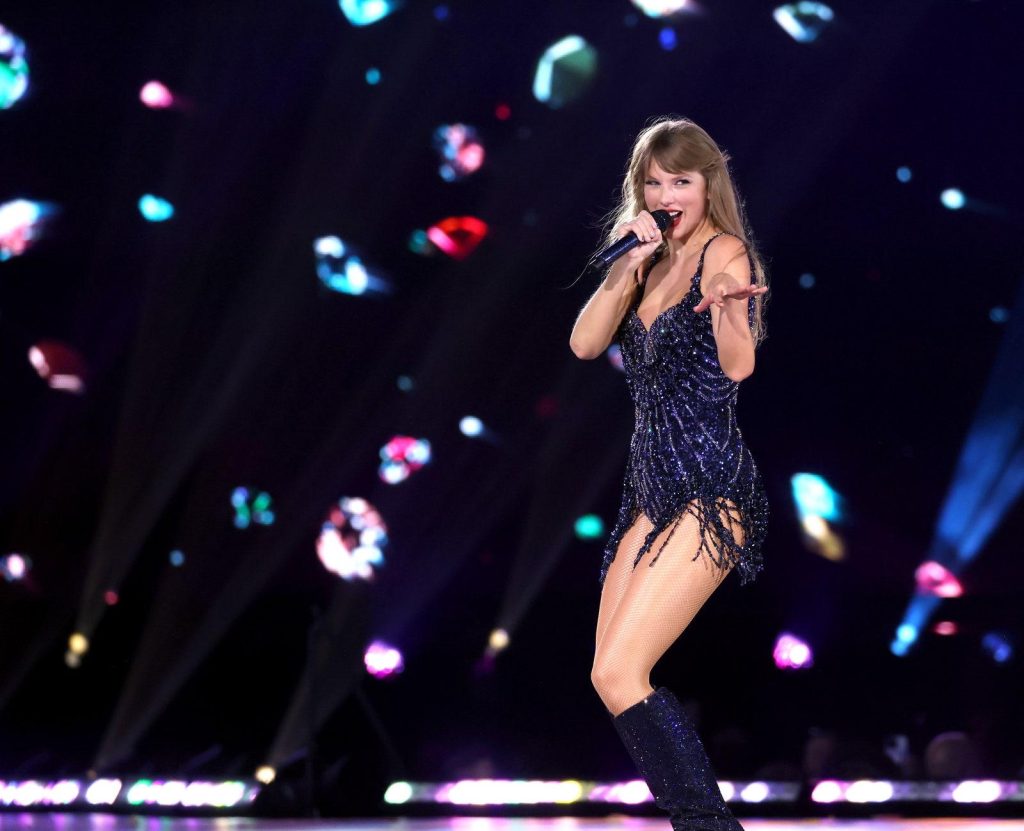
The non-stop show ended with cuts from Swift’s most recent album, Midnights, with the stage cast in dark light, representative of both the title of the album and the end of the concert. Standing firmly in the present, Midnights still has its roots in the past, since the album tells “the stories of 13 sleepless nights scattered throughout my life,” Swift explained in a Instagram post. It’s easy to follow the way the previous two-plus hours of sonic reflection—aided through the incredible set design—brought her to where she is now. As Minocha summarizes, “I’ve been to almost all of Taylor’s past tours and the stage and production has always been above and beyond, but because this one explores all the eras of her career, everything is just next level.”
By: Katherine McLaughlin
Originally published at: Architectural Digest
For enquiries, product placements, sponsorships, and collaborations, connect with us at hello@zedista.com. We'd love to hear from you!
Our humans need coffee too! Your support is highly appreciated, thank you!

